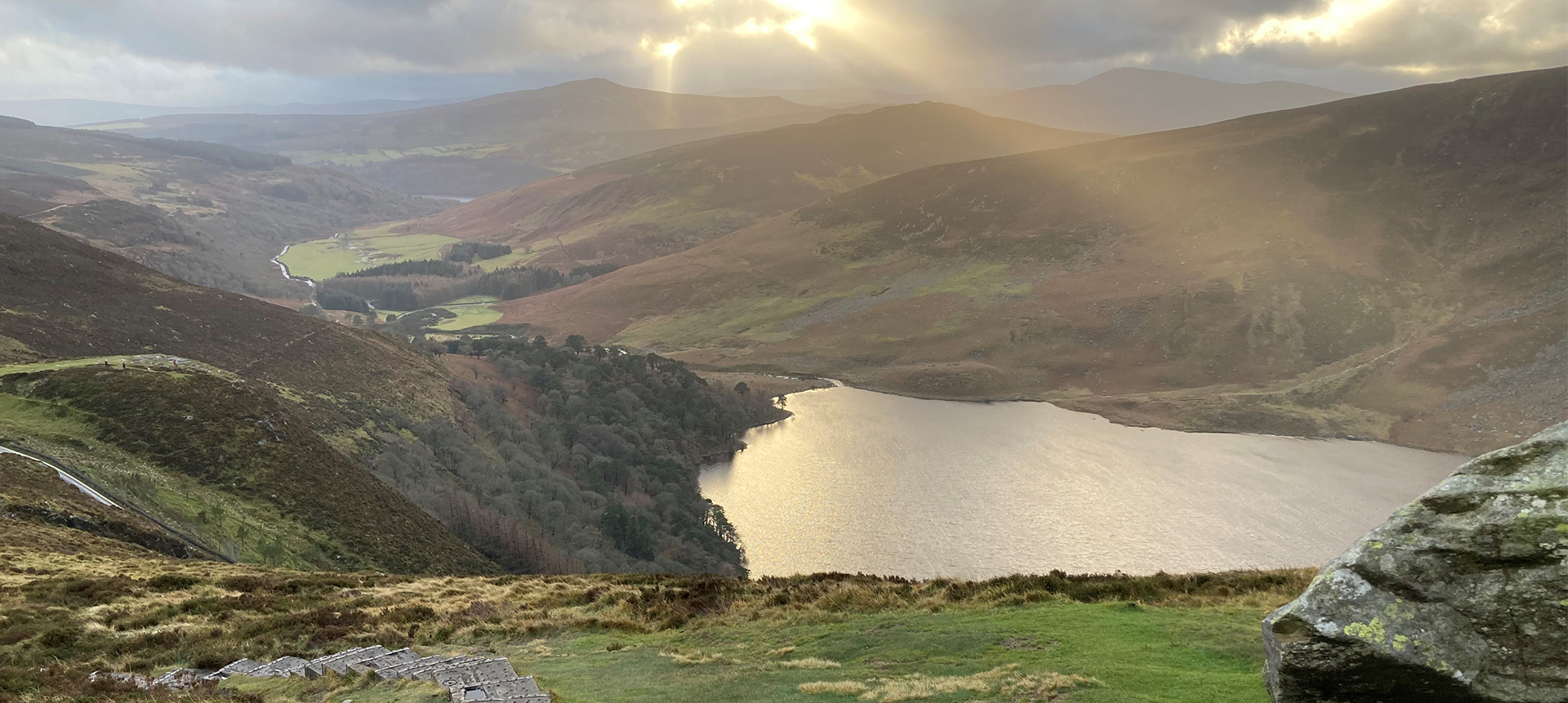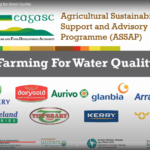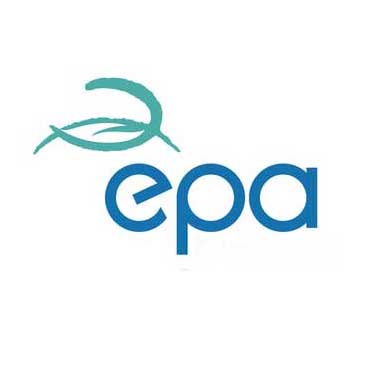This Teagasc webinar is all about ASSAP – the Agricultural…
Europe’s Environment 2025: Insights for Ireland’s Water Quality
The European Environment Agency (EEA) has published its flagship report, Europe’s Environment 2025, offering the most comprehensive assessment to date of the state and outlook of Europe’s environment, climate, and sustainability. The report is structured in three parts, each offering valuable insights for those working in water quality across Ireland.
1. Main Report
This integrated narrative explores how climate and nature underpin health, resilience, and prosperity across Europe. Several chapters are particularly relevant to water quality:
- Chapter 3: Europe’s environment and climate: state and outlook
- Section 3.1: Biodiversity and ecosystems — Only 38% of rivers, lakes, and coastal waters had good/high ecological status in 2021. Key pressures include agricultural runoff, urbanisation, invasive species, and climate change.
- Section 3.2: Climate change — Highlights how droughts, floods, and water scarcity are impacting water resilience and quality.
- Section 3.3: Pollution and environmental health — Nearly half of European waters failed chemical quality standards due to persistent pollutants like mercury, PFAS, and microplastics.
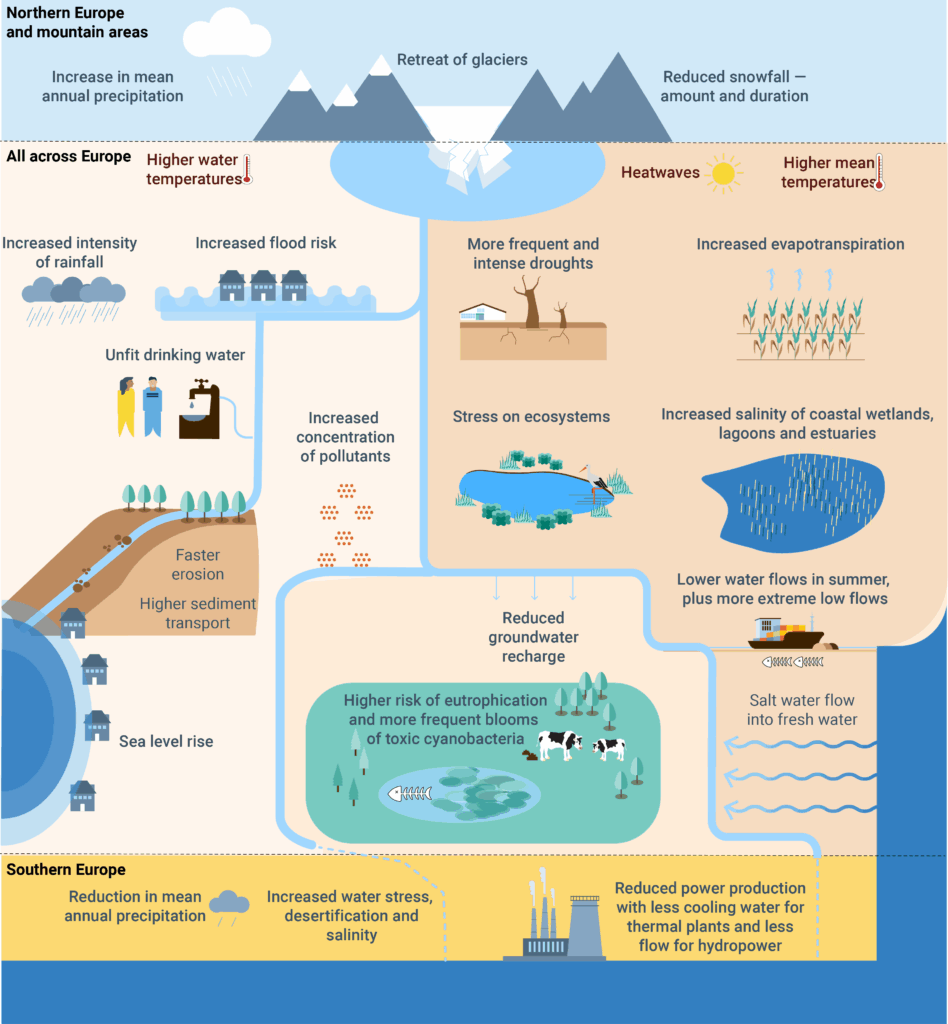
- Chapter 4: Managing the dynamic between our economy and natural resources – highlights water as a finite and critical resource, underscores the need for integrated water management and circular economy approaches, and identifies key gaps in monitoring and policy implementation that need to be addressed to ensure long-term water resilience.
- Chapter 5: Production and Consumption Systems
- Covers agriculture, food, and built environment systems — all of which influence water quality through land use, runoff, and infrastructure.
- Chapter 6: Levers of Transformative Change – highlights water resilience as a key opportunity for transformative change
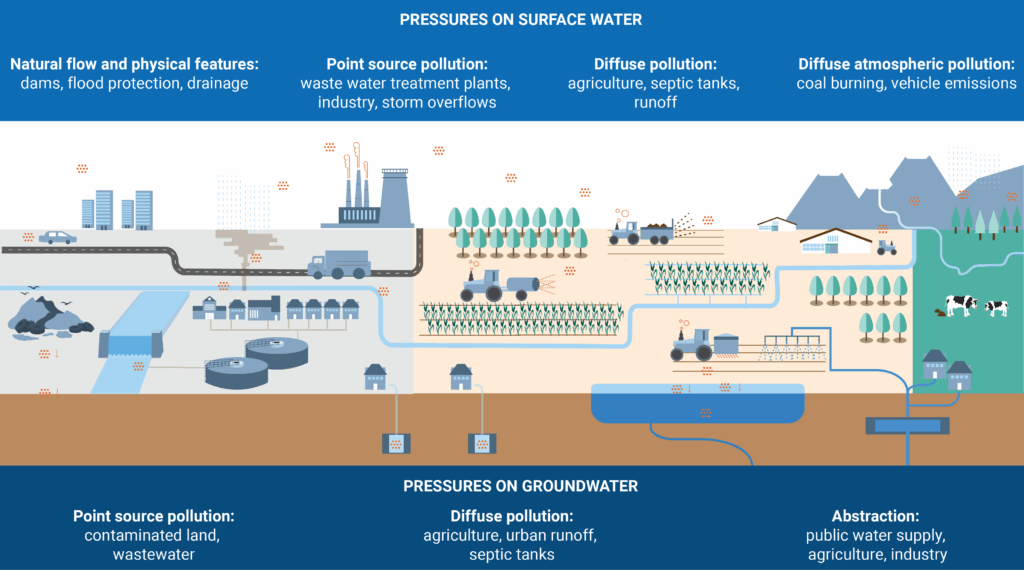
2. Thematic Briefings
These briefings assess past trends and future outlooks across 35 topics. Several are directly relevant to water quality, including:
- 3.4 – Water pollution and human health – Assesses health risks from polluted water, including PFAS, microplastics, and nutrients, and reviews EU policy responses.
- 1.4 – Water and climate impacts – Explores how climate change intensifies droughts, floods, and water stress, threatening water quality and ecosystem resilience.
- 1.2 – Pollution of ecosystems – Links agricultural runoff and industrial pollution to aquatic ecosystem degradation and poor chemical status in surface waters.
- 1.3 – Protected areas – Highlights how pressures on protected habitats, including wetlands and rivers, undermine water quality and restoration efforts.
- 1.7 – Soil resources – Shows how degraded soils contribute to runoff, nutrient leaching, and reduced water retention, impacting water quality.
They also evaluate progress toward EU policy targets, such as the Water Framework Directive, by assessing trends, outlooks, and the likelihood of meeting 2030 and 2050 environmental objectives.
3. Country Profiles
The country profiles provide concise, country-level assessments on key trends in environment, climate and socio-economic developments, examining core systems such as energy, mobility and food in the 38 EEA member and cooperating countries.
Ireland’s profile draws heavily from the EPA’s State of the Environment Report 2024 and includes updated data and insights from EPA staff and external experts. It includes a concise overview of Ireland’s environmental trends, challenges, and policy responses, with links to key indicators and national strategies that align with EU-wide sustainability goals
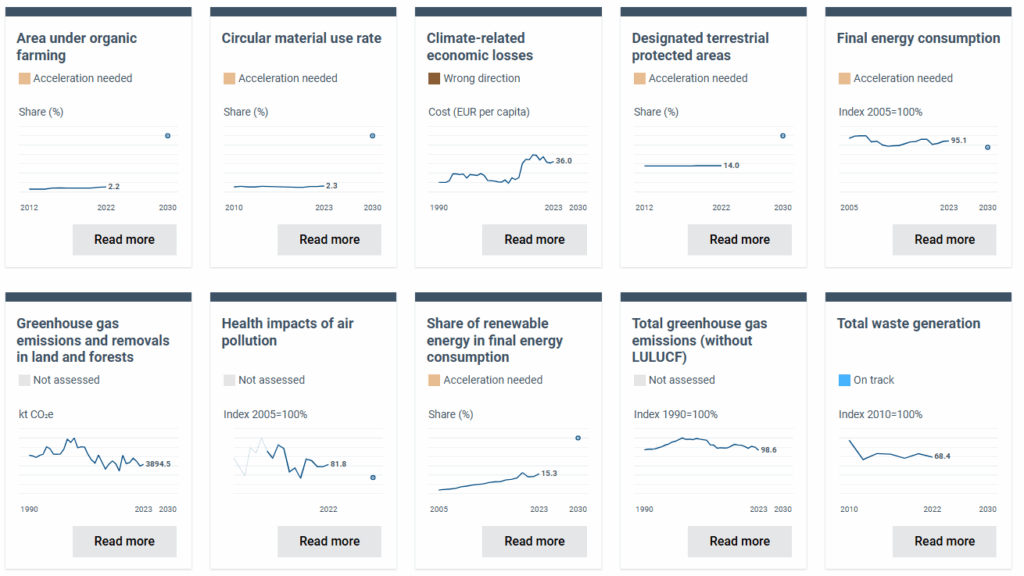
Useful Tools for Exploring Water Quality Across Europe
Explore Indicators
View all available indicators across all countries for quick and easy country comparisons.
Download Data
Access all indicator data in CSV format for analysis.
Ask the AI Assistant
The AI Assistant can answer your questions based on the contents of Europe’s environment 2025

